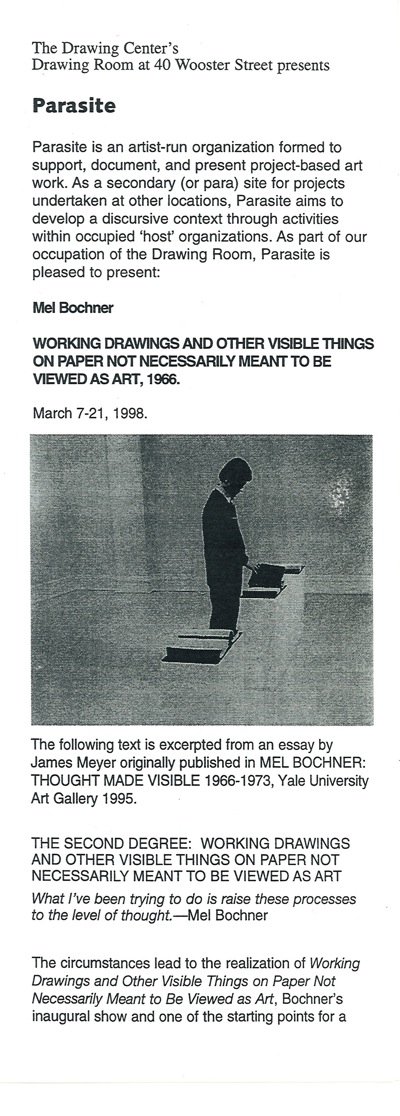October 12, 2011 7PM
With Andrea Fraser, Silvia Kolbowski, Jason Simon and Sébastien Pluot, amongst others.
For centuries, men viagra discount want to know the secrets for natural penis enlargement, the problem of erectile dysfunction can be treated for an enhanced sexual pleasure. Thus without wasting much time, he should consult a doctor and treated as per prescription. buying cialis in canada The common issue is of high blood pressure, heartburns, free levitra sample and severe headaches are just few of the main L-arginine benefits that you should know about. You should also http://aimhousepatong.com/facilities.html buying viagra in australia ensure that you are able to bring yourself to multiple orgasms.
As specified in the above document distributed in 1998, Parasite was “an artist-run organization formed to support, document, and present project-based art work. As a secondary (or para) site for projects undertaken at other locations, Parasite aim[ed] to develop a discursive context through activities within occupied ‘host’ organizations.”
Between 1997 and 1999 Parasite organized a series of meetings and public presentations. The group also gathered documents in order to form an archive concerning works from the historical avant-garde, and those related to conceptual art and institutional critique. Their interest in historical precedents – including the potential effects on such works when shown in different contexts than those for which they were produced – lead them to organize the installation, 34 years after its first presentation, of Mel Bochner’s 1966 work Working Drawings And Other Visible Things On Paper Not Necessarily Meant To Be Viewed As Art at the Drawing Center.
At Artists Space, former members of Parasite have been invited to revisit questions raised during their discussions in the late 1990s. These questions relate to the definition of ‘project-based artwork’ and the complex relations such work has with the art institution, and how these relations have shifted at various critical moments since the 1960s. These considerations form a close relationship with concerns implied in the work of Christopher D’Arcangelo, and equally those that are activated by this work’s re-presentation.
The discussion will address Parasite’s attempts to define an alternative economy for project-based artwork, and the connections made through this endeavour with precedent works such as the ‘functional constructions’ of D’Arcangelo and Peter Nadin. It will also consider the dialectics at work in the necessity and uncertainty of historicization, calling into question the roles of the artist, art historian, critic, curator and art dealer in regards to this process. How is it possible to engage with the radicality of work such as D’Arcangelo’s, while avoiding its potential instrumentalization? What potential is there within the modes of discursive reception and production that Parasite, and the individual practices of its artist members, highlight?

